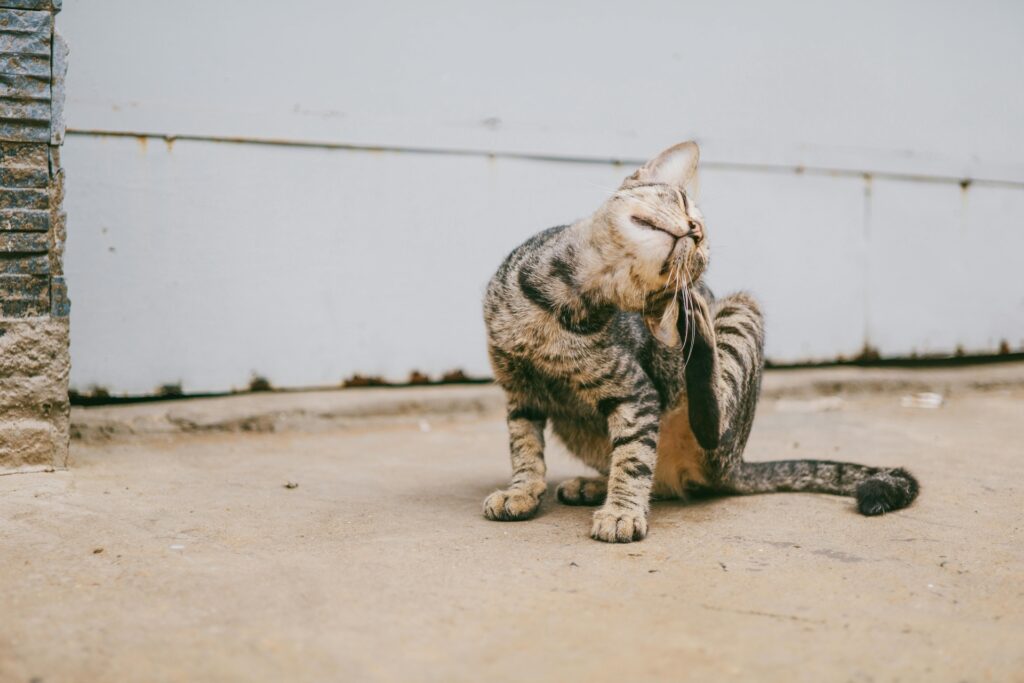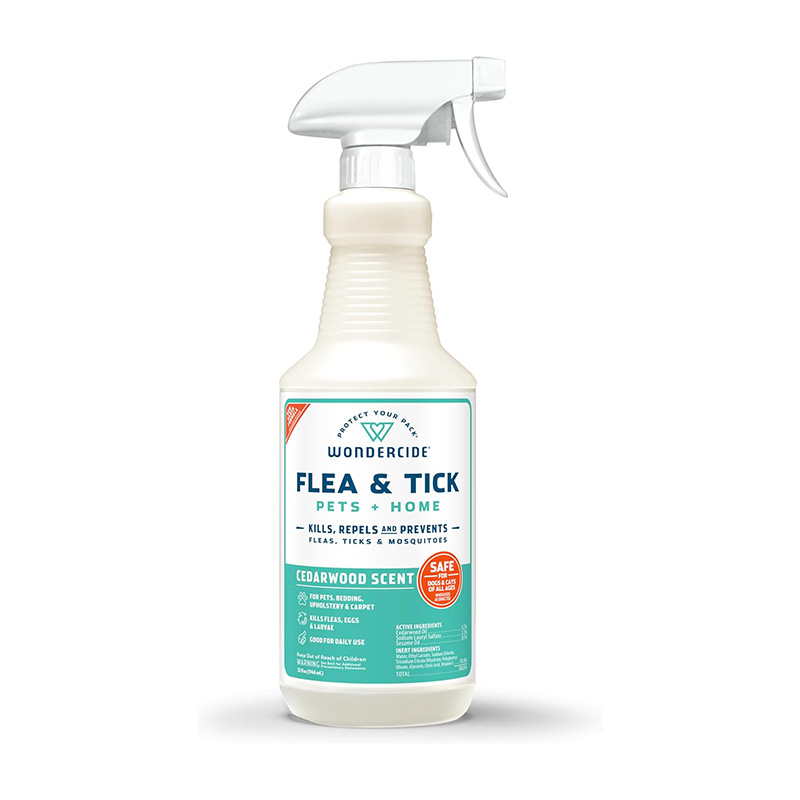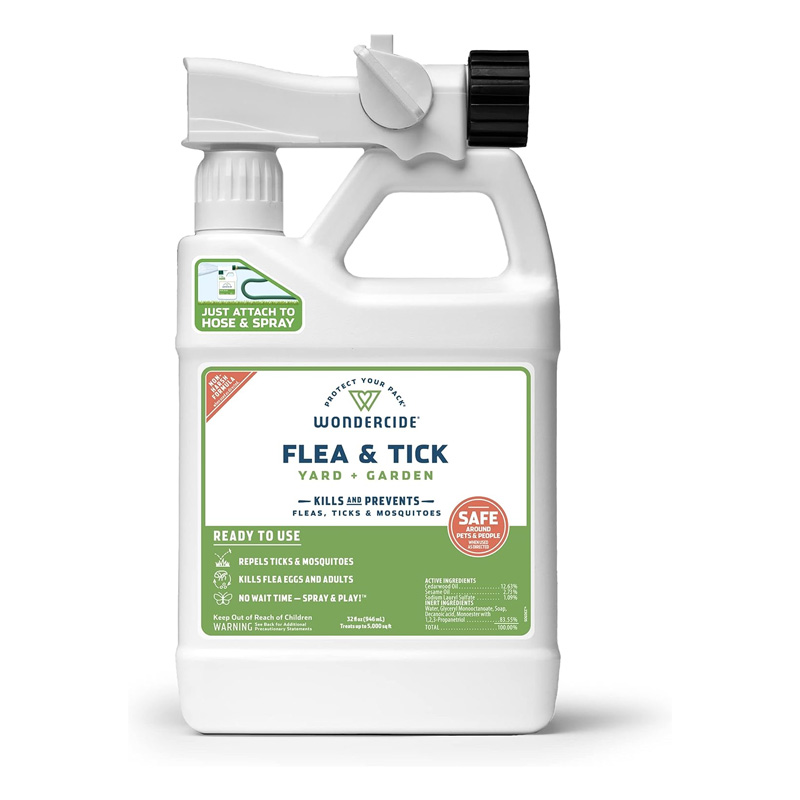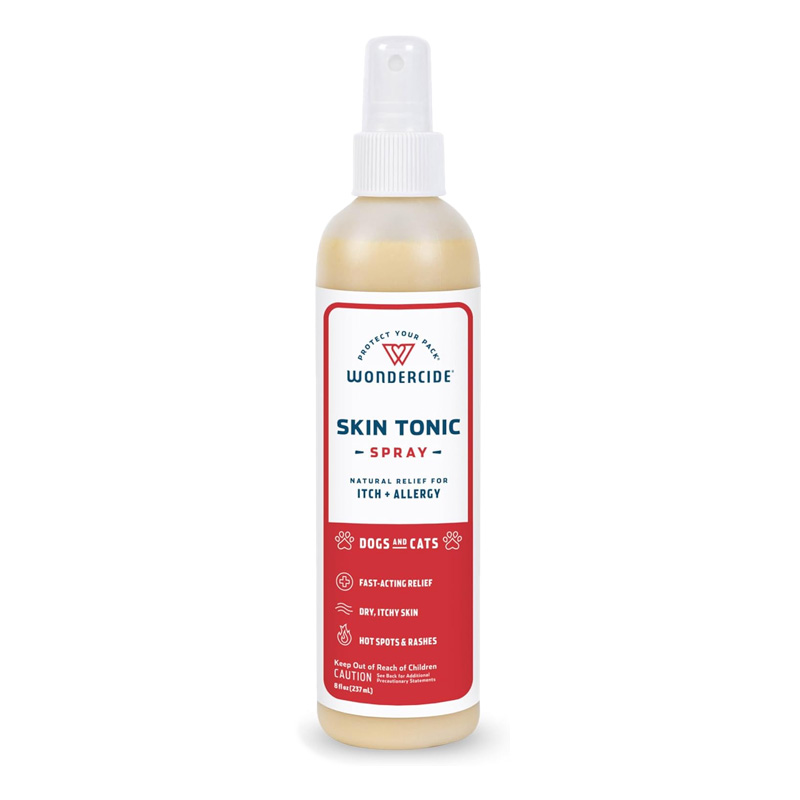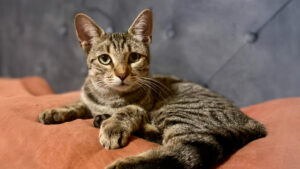Flea infestations can cause significant discomfort and health issues for pets and their families. A holistic approach to flea prevention and treatment includes natural remedies, environmental control, and preventive strategies. Here’s a comprehensive plan for managing and preventing flea infestations in dogs, puppies, cats, and kittens.
Understanding Fleas and Their Lifecycle
Fleas are parasitic insects that feed on the blood of animals. Their lifecycle includes four stages:

- Egg: Laid on the host, but often fall off into the environment. Hatch within 1-10 days.
- Larva: Emerge from eggs and feed on organic debris and flea dirt (adult flea feces). This stage lasts 5-12 days.
- Pupa: Cocoon themselves and can remain dormant for weeks to months, waiting for ideal conditions to emerge: between 70°F to 85°F (21°C to 29°C) and 50% to 90% relative humidity.
- Adult: Emerges from the cocoon and begins feeding on the host immediately. An adult flea can live for several weeks to months on the host.
Step-by-Step Plan for Flea Infestation and Prevention
1. Immediate Treatment for Flea Infestation
DOGS & CATS
-
- Natural Flea Baths: Use a gentle, pet-safe herbal flea shampoo with natural ingredients. Cats can’t metabolize the phenols in essential oils so steer clear of those. Here’s a recipe for making your own flea shampoo:
-
- Ingredients:
-
- 1 cup Castile soap (unscented)
-
- 1 cup distilled water
-
- 2 tablespoons neem oil (it’s not an essential oil)
-
- 2 tablespoons organic apple cider vinegar
-
- 1 tablespoon vegetable glycerin
-
- Ingredients:
-
- Instructions:
-
- Mix all ingredients in a bottle and shake well.
-
- Wet your pet’s fur with warm water.
-
- Apply the shampoo and work into a lather, avoiding the eyes and ears.
-
- Let it sit for 5 minutes, then rinse thoroughly with warm water.
-
- Repeat weekly during an infestation.
-
- Instructions:
-
- Natural Flea Baths: Use a gentle, pet-safe herbal flea shampoo with natural ingredients. Cats can’t metabolize the phenols in essential oils so steer clear of those. Here’s a recipe for making your own flea shampoo:
-
- Flea Combing: Use a fine-toothed flea comb daily to remove adult fleas and flea dirt. Focus on the neck, base of the tail, under chin, and underbelly. Dispose of fleas in soapy water to kill them.
-
- Herbal Sprays: Make your own herbal flea spray with the following recipe:
-
- Ingredients:
-
- 1 cup distilled water
-
- 1 cup organic apple cider vinegar
-
- 10 drops neem oil
-
- 10 drops lemon juice
-
- Ingredients:
-
- Instructions:
-
- Mix all ingredients in a spray bottle.
-
- Shake well before each use.
-
- Lightly spray your pet’s coat, avoiding the eyes and mucous membranes. You can also use this spray on bedding and around the home.
-
- Instructions:
-
- Herbal Sprays: Make your own herbal flea spray with the following recipe:
PUPPIES & KITTENS (12 Weeks and Up)
-
- Gentle Flea Baths: For very young animals, use a gentle, natural flea shampoo designed for puppies and kittens. Avoid frequent bathing to prevent drying out their skin. Here’s a mild shampoo recipe:
-
- Ingredients:
-
- 1 cup Castile soap (unscented)
-
- 1 cup distilled water
-
- 1 tablespoon organic coconut oil
-
- 1 tablespoon vegetable glycerin
-
- Ingredients:
-
- Instructions:
-
- Mix all ingredients in a bottle and shake well.
-
- Wet your pet’s fur with warm water.
-
- Apply the shampoo and work into a lather, avoiding the eyes and ears.
-
- Rinse thoroughly with warm water.
-
- Use once a week as needed.
-
- Instructions:
-
- Gentle Flea Baths: For very young animals, use a gentle, natural flea shampoo designed for puppies and kittens. Avoid frequent bathing to prevent drying out their skin. Here’s a mild shampoo recipe:
-
- Flea Combing: Daily combing with a flea comb is essential. Dispose of fleas in soapy water to kill them.
- Instructions:
-
- Combine all ingredients in a spray bottle.
-
- Shake well before use.
-
- Lightly mist a soft cloth with the spray. Gently wipe the cloth over the kitten’s fur, avoiding the face and eyes.
- Use daily as needed
-
- Instructions For Lemon Peel Infusion:
- Take one organic lemon and wash it thoroughly.
- Peel the lemon, taking care to avoid the white pith.
- Place the lemon peel in a small pot and add 2 cups of water.
- Bring the water to a boil, then reduce heat and let it simmer for 30 minutes.
- Allow the mixture to cool completely.
- Strain the infusion to remove the lemon peels
2. Flea Environmental Control
Indoor Environment:
- Vacuum Regularly: Vacuum carpets, rugs, upholstery, and pet bedding daily. Dispose of the vacuum bag or clean the canister after each use.
- Wash Bedding: Wash pet bedding and any fabric your pet sleeps on in hot water weekly.
- Natural Indoor Sprays: Make your own indoor spray to treat carpets and furniture:
- Ingredients:
- 1 cup distilled water
- 1 cup organic apple cider vinegar
- 1 tablespoon baking soda
- 10 drops fresh squeezed lemon juice
- Instructions:
- Mix all ingredients in a spray bottle.
- Shake well before each use.
- Spray lightly on carpets, furniture, and pet bedding. Spot test for fading first. Be cautious using lemon juice in sunny areas as it may cause bleaching.
- Ingredients:
- Indoor Plants:
- Lavender (Lavandula spp.): Lavender emits a pleasant fragrance that humans love but repels fleas. Its essential oils contain compounds like linalool and linalyl acetate, which are natural insect repellants. Bonus: Lavender is safe for dogs and cats when ingested in small amounts.
- Rosemary (Rosmarinus officinalis): Rosemary is another aromatic herb that fleas tend to avoid. It can be grown indoors in pots or placed in strategic locations to deter fleas. Rosemary is safe for dogs and cats and can even be used as a culinary herb.
- Catnip (Nepeta cataria): Catnip is well-known for its effects on cats, but it also repels fleas. The active compound nepetalactone acts as a natural insect repellant. While it’s safe for cats, some dogs may also find it attractive.
- Mint (Mentha spp.): Mint plants, such as spearmint or peppermint, emit a strong aroma that fleas dislike. They can be grown indoors in pots or planted in outdoor garden beds. Mint is safe for dogs and cats but should be given in moderation to avoid gastrointestinal upset. When planting outside, plant in a pot or it will take over.
Outdoor Environment:
- Yard Maintenance: Keep the lawn mowed and remove leaf litter and other debris. Fleas thrive in shady, moist areas.
- Diatomaceous Earth: Sprinkle food-grade diatomaceous earth around the yard and in pet resting areas to kill fleas. Use a dust mask and gloves to apply, and avoid inhalation.
- Nematodes: Nematodes are microscopic, worm-like organisms that are beneficial in controlling outdoor flea populations naturally. Specifically, certain species of nematodes, such as Steinernema carpocapsae and Heterorhabditis bacteriophora, are known to prey on flea larvae in the soil, effectively reducing flea populations before they have a chance to mature into adult fleas.
- Application Process and Frequency:
- Preparation: Before applying nematodes, ensure that the outdoor area is moist but not waterlogged. Water the area thoroughly if needed, as nematodes require moisture to survive and move through the soil.
- Application Method: Nematodes are typically sold as a powder or in a suspension that can be mixed with water. Follow the manufacturer’s instructions for dilution ratios and application rates based on the size of the area to be treated.
- Spraying: Use a garden sprayer or hose-end sprayer to apply the nematode solution evenly over the targeted outdoor areas. Focus on areas where flea larvae are likely to be present, such as shaded areas, under shrubs, and along fence lines.
- Timing: Apply nematodes in the late afternoon or early evening when temperatures are cooler and the soil surface is less likely to dry out quickly. Avoid applying nematodes during periods of heavy rain or extreme heat, as this may reduce their effectiveness.
- Frequency: Depending on the severity of the flea infestation and environmental conditions, nematodes may need to be reapplied every 4-6 weeks during the flea season for continuous control. Monitor flea activity and reapply nematodes as needed to maintain control.
- Application Process and Frequency:
- Outdoor Plants:
- Marigolds (Tagetes spp.): Marigolds contain pyrethrin, a natural insecticide commonly used in flea control products. Planting marigolds around outdoor living areas can help repel fleas and other insects. However, avoid planting them in areas where pets can easily access them, as ingestion may cause mild gastrointestinal upset.
- Lemon Balm (Melissa officinalis): Lemon balm emits a citrusy scent that fleas find unpleasant. It can be grown in pots or planted in garden beds near entry points to your home. Lemon balm is safe for dogs and cats and can also be used to make a soothing herbal tea for humans.
- Chrysanthemums (Chrysanthemum spp.): Chrysanthemums contain pyrethrin compounds, making them effective natural insect repellants. Planting chrysanthemums in outdoor garden beds can help deter fleas, ticks, and other pests. However, exercise caution as certain varieties may be toxic to pets if ingested.
- Lavender (Lavandula spp.): Lavender also works as an outdoor plant to repel fleas, making it a versatile option for both indoor and outdoor use. Plant lavender in sunny, well-drained areas of your garden to enjoy its fragrance and flea-repelling properties.
3. Flea Prevention
Diet and Supplements:
-
- Healthy Diet: Feed fresh, whole foods to strengthen your pet’s immune system.
- We recommend a raw diet rich in natural enzymes, vitamins, and minerals that help strengthen the immune system and improve skin and coat health, naturally making pets less attractive to fleas.
- Brewer’s Yeast: Adding small amounts of brewer’s yeast to your pet’s diet can make them less appealing to fleas.
- Dosage: For dogs, 1 teaspoon per 30 pounds of body weight per day. For cats, 1/2 teaspoon per day. Ensure the yeast is non-garlic for cats.
- Omega-3 Fatty Acids: Supplementing with omega-3 fatty acids can improve skin health, making it less attractive to fleas.
- Cumin: It’s said that cumin makes the skin unfavorable to fleas. Considered warming in Traditional Chinese Medicine (TCM), cumin can help improve circulation and energy flow in the body, promoting overall vitality and resilience against pests. Cumin contains phytochemicals such as thymoquinone that have anti-inflammatory and antioxidant properties. These properties can help reduce inflammation caused by flea bites and support the immune system in fighting off infestations. By aiding digestion, cumin helps ensure that your pet is absorbing nutrients efficiently, which is crucial for maintaining a healthy coat and skin, making them less attractive to fleas.
- Dosage:
- Dogs:
- Small Dogs (under 20 lbs): A pinch (about 1/16 teaspoon) of ground cumin mixed into their food once or twice a week.
- Medium Dogs (20-50 lbs): 1/8 teaspoon of ground cumin mixed into their food once or twice a week.
- Large Dogs (over 50 lbs): 1/4 teaspoon of ground cumin mixed into their food once or twice a week.
- Cats: Cats are particularly sensitive, so it’s crucial to use very small amounts. Use a tiny pinch (less than 1/16 teaspoon) mixed into their food once a week and closely monitor for any adverse reactions.
- Dogs:
- Dosage:
- Healthy Diet: Feed fresh, whole foods to strengthen your pet’s immune system.
Natural Flea Repellant Collars:
-
-
-
- EM Ceramic Bead Collars: EM (Effective Microorganism) ceramic beads are known for their ability to repel fleas and ticks. These collars can be worn continuously and are a safe, natural option.
- Baltic Amber Collars: Baltic amber generates a static charge as the pet moves, which can repel fleas and ticks. The resin in the amber also releases a natural terpene that has flea-repellent properties.
- Gemstone Combinations:
Collars incorporating specific gemstones offer holistic benefits, including flea prevention. Each gemstone carries unique properties that can contribute to repelling fleas and promoting your pet’s well-being, because after all, a healthy pet is the best flea deterrant. Consider adding the following gemstones to your pet’s collar:
- Amethyst: Amethyst possesses natural insect-repelling properties, helping to deter fleas from attaching to your pet’s fur. Additionally, its calming effects can reduce stress, which may lower the risk of flea infestations.
- Rose Quartz: Rose quartz emits a subtle energy that can create an unwelcoming environment for fleas. Its emotional healing properties also promote a sense of calmness, reducing your pet’s susceptibility to stress-related flea outbreaks.
- Clear Quartz: Clear quartz acts as an amplifier, enhancing the flea-repelling effects of other gemstones. By amplifying these properties, it strengthens your pet’s defense against fleas and promotes overall balance in their energy field.
- Tiger’s Eye: Tiger’s eye is renowned for its protective qualities, creating a shield against external threats such as fleas. Its grounding nature instills confidence and strength in your pet, empowering them to ward off potential flea infestations.
- Hematite: Hematite’s protective energy forms a barrier against fleas, safeguarding your pet from infestations. Its stabilizing properties promote a balanced energy flow, making your pet less appealing to fleas seeking a host. Hematite also aids in iron absorption, helping reduce anemia risk from flea bites.
-
Combining these gemstones in your pet’s collar can create a synergistic effect, supporting their overall well-being and potentially contributing to flea prevention. Ensure the gemstones are securely attached to the collar and regularly cleanse them to maintain their effectiveness.
-
-
Water Dish Crystals:
-
-
-
- Amethyst: Placing an amethyst crystal in your pet’s water dish can have calming properties, raise vibrations, and contribute to overall health.
- Rose Quartz and Clear Quartz: These can also be added to the water dish to promote general wellness and amplify the healing properties of other methods used.
- Not all crystals are water safe. Always confirm water safety before placing a crystal into drinking water.
-
-
Regular Grooming:
-
-
- Brushing: Regular brushing helps remove fleas and flea dirt while also distributing natural oils in the coat.
- Bathing: Periodic bathing with herbal shampoos can help keep fleas at bay.
-
-

4. Homeopathic & Herbal Support for Fleas
Homeopathic Remedies:
- Psorinum: Often used in cases of severe flea infestations and skin reactions.
- Dosage: 30C once a day until fleas and symptoms are gone.
- Alternatively, Joette Calabrese recommends one dose of Psorinum 200C every seven days; one dose of Ledum 200C (for bites and stings) twice a day; one dose of Antimonium crudum 6C (for healing) two to three times a day.
- Sulphur: Useful for pets with itchy, irritated skin due to fleas.
- Dosage: 30C potency once a day until itching is gone.
Herbal Supplements:
- Nettles: Can be used to help with itching and skin health.
- Dosage: 1/8 teaspoon of dried nettle leaf per 10 pounds of body weight per day, mixed into food.
- Calendula: Applied topically, it can soothe irritated skin and promote healing.
- Usage: Make a calendula tea by steeping 1 tablespoon of dried calendula flowers in 1 cup of boiling water. Allow it to cool, then use as a rinse or apply with a cloth to affected areas.
5. Ongoing Flea Prevention
- Regular Checks: Check pets regularly for fleas, especially after outdoor activities.
- Consistent Routine: Maintain a consistent flea prevention routine year-round, not just in peak flea season.
Cadence For All Methods
- Immediate Treatment:
- Shampooing: Weekly during infestation.
- Flea Combing: Daily.
- Herbal Sprays: Daily or as needed.
- Environmental Control:
- Vacuuming: Daily.
- Washing Bedding: Weekly.
- Indoor Sprays: Weekly or as needed.
- Outdoor Treatments: Bi-weekly or as needed, especially after rain or heavy dew.
- Preventive Measures:
- Dietary Supplements: Daily.
- Natural Collars: Continuous wear, replace as needed every 6-12 months.
- Crystals in Water Dishes: Continuous use, clean crystals weekly and set out to recharge under the full moon.
- Regular Grooming: Brushing weekly, bathing monthly.
- Homeopathic and Herbal Support:
- Homeopathic Remedies: Daily during infestation.
- Herbal Supplements: Daily as part of diet as needed.
A comprehensive, holistic approach to flea prevention and treatment involves addressing the problem from multiple angles: immediate treatment, environmental control, preventive measures, and ongoing monitoring. By integrating natural remedies, proper nutrition, and regular care, you can effectively manage and prevent flea infestations naturally.
If you are looking to go more natural but are in a pinch and just need something you can order, we recommend Wondercide. While they do use essential oil, they use phenol-free oils so that they are safe for cats and kittens of all ages.The flea collar hasn’t worked for us (and is not safe for puppies and kittens under 4 months, pregnant or nursing dogs or cats), but their pet, home, and yard sprays are all extremely effective and that was our go to before this deep dive into holistic flea management.
As always, a holistic care plan must address the root cause of the issue and approach from multiple angles. So while Wondercide is a great product, we still recommend adding additional flea prevention and flea repellant measures mentioned above.
- Instructions:
-
- Combine all ingredients in a spray bottle.
-
- Shake well before use.
-
- Lightly mist a soft cloth with the spray. Gently wipe the cloth over the kitten’s fur, avoiding the face and eyes.
- Use daily as needed
-
- Instructions For Lemon Peel Infusion:
- Take one organic lemon and wash it thoroughly.
- Peel the lemon, taking care to avoid the white pith.
- Place the lemon peel in a small pot and add 2 cups of water.
- Bring the water to a boil, then reduce heat and let it simmer for 30 minutes.
- Allow the mixture to cool completely.
- Strain the infusion to remove the lemon peels
